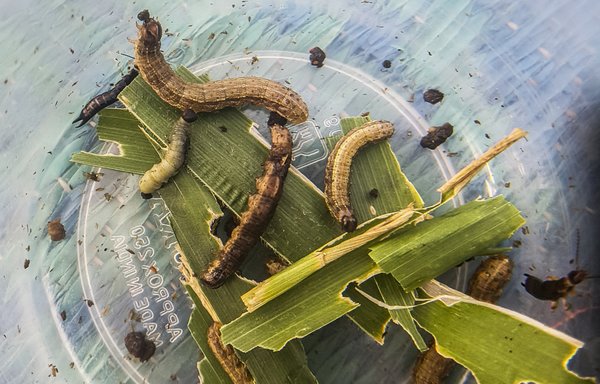- Share this article
- Subscribe to our newsletter
Fall Armyworm infestation in Asia
Fall Armyworm is sweeping across Asia, alarming smallholder farmers and threatening livelihoods, the Food and Agriculture Organization of the United Nations (FAO) reported in March 2019.
The insect is native to the Americas. However, since 2016 it has been aggressively moving ever eastwards, sweeping across Africa, and making landfall for the first time in Asia last summer. Fall Armyworm was first detected in India in July 2018 and by January of this year, it had spread to Sri Lanka, Bangladesh, Myanmar, Thailand and China’s Yunnan Province.
In the case of Sri Lanka, there were reports that up to 40 000 hectares had been infested, damaging some 20 per cent of its crops. China is the biggest maize producer in Asia, and second largest producer globally. While economic losses in China and in the other Asian countries have not yet been tallied, estimates of economic damage from Fall Armyworm in Africa ranged from 1 to 3 billion USD.
Asia prepares to counter Fall Armyworm infestation
When Fall Armyworm arrived in Africa in 2016, FAO and its member countries in Asia followed the progression closely – and planned for its arrival on this continent. The Plant Protection Commission for Asia and the Pacific began raising awareness about the threat early last year, sharing key information on the pest, its spread towards Asia, and how to manage it sustainably in case of infestation.
Once an infestation is confirmed, governments are initiating efforts to continue to raise awareness and monitor the presence and spread of Fall Armyworm on maize and other crops. Awareness programmes that inform and train farmers on integrated pest management techniques include identifying natural enemies of the Fall Armyworm, enhancing natural biological controls and mechanical controls, such as crushing egg masses and employing the use of biopesticides.
The use of chemical pesticides needs to be very carefully considered, given that Fall Armyworm larvae hide largely in the ring of leaves (whorl), and that chemical pesticides can have negative effects on environment and public health. This is taken into consideration at policy and field level. With these measures put in place, the negative effects of infestations can be sustainably managed and can help to maintain populations low enough to limit economic and livelihood damage.
(FAO/ile)





Add a comment
Be the First to Comment